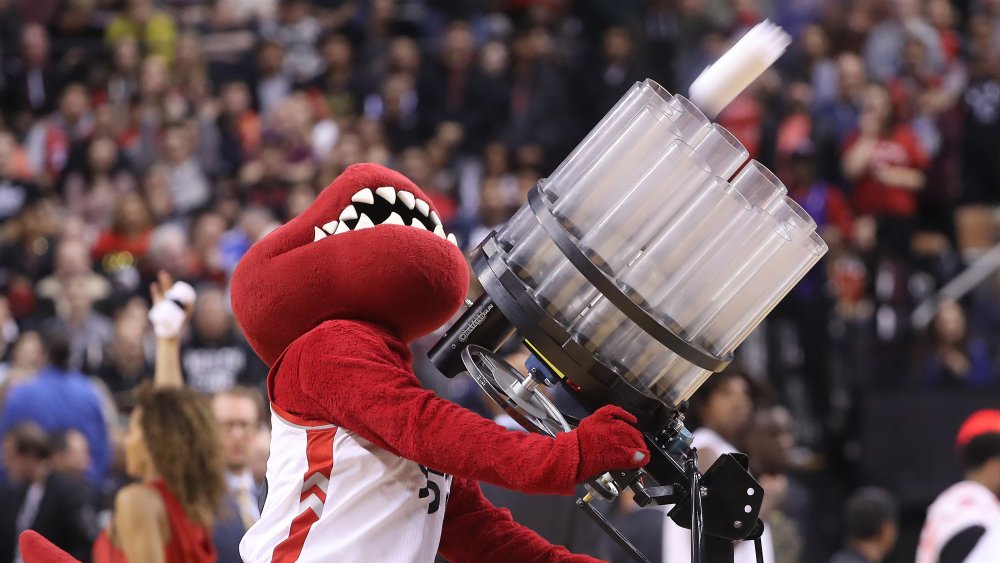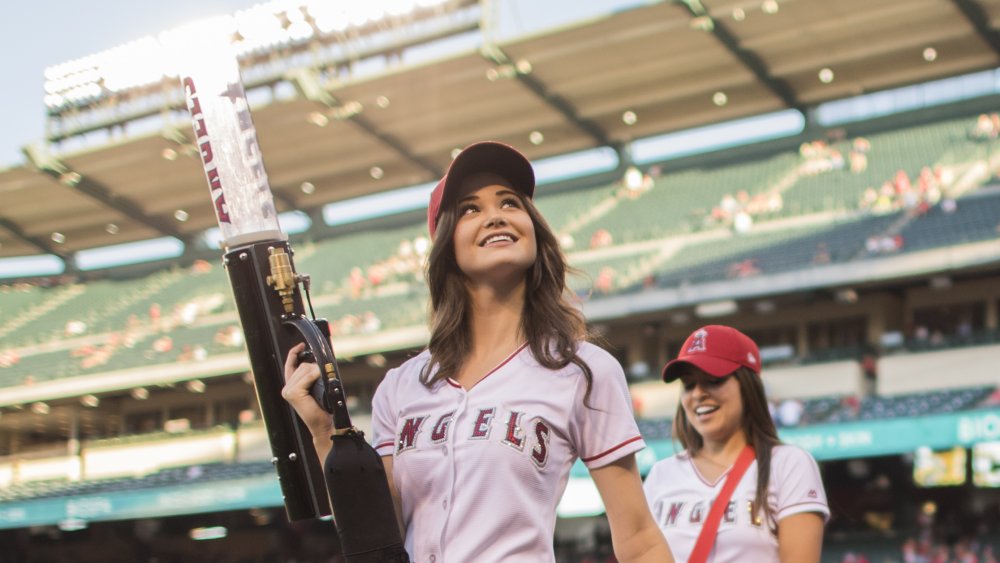The Surprising Origin Of The T-Shirt Cannon
Remember sporting events? Big crowds gathered to watch athletes excel at whatever sport was in question — baseball, football, whatever else. Didn't really matter. What was better than being in the stands, rooting on your favorite team. Well, how about stuff. What's better than stuff? Free stuff. What's better than free stuff? Free stuff that's shot at you. Hot dang!
Fortunately for all of us, we live in a world of wonders. Witness, for instance, team mascots, intrepid individuals of no little athletic ability themselves — jumping, running, dancing, spinning, and all while wearing what's probably an outlandish and improbable costume representing the team's spirit. They break up the action, offer a little humor, engage the fans even more solidly than they were when they walked in. Gotta love a good mascot. There was a time when a good mascot also needed a good arm — every once in a while, a team would want the mascot to pass out free merch to the crowd, whether in the form of little mascot dolls or — say, here's an idea! — t-shirts with the team logo.
A good arm was fine as far as it went, but it usually didn't go far enough. That's what Tim Derk realized, anyway, during his 1989-2004 stint as The Coyote, mascot for the San Antonio Spurs basketball team. What better way to pump up the crowd than to throw them stuff? (Soft stuff. Let's be clear.)
Today's models are a far cry from the cast-iron original
But that would only travel so far. (Put another way, it didn't really fly.) According to Mental Floss, Derk and other mascots tried propelling items with giant rubber bands, with mixed results. And then, as any Bill Nye fan knows, science ruled. Applying the basic principles of pneumatics, Derk and colleagues used a 90-pound, cast-iron barrel, combined with compressed air, to shoot for the stars — or at least the nosebleed seats. Calling himself "Rambote" — we're guessing it rhymed with "coyote," rather than, say, "zygote," but we're willing to stand corrected — it was a hit.
The principle went back to World War II, when unarmed merchant vessels found a way to use steam from their boilers to launch projectiles like grenades at potential threats. That morphed into the spud cannon, says Get Pocket, and of course the paintball gun.
Other mascots took a great idea and ran with it. Before long there was a semi-automatic t-shirt cannon that could fire as many as 16 rounds — er, shirts — before reloading. Design improvements led to versions that weigh as little as two pounds. They also got bigger, of course — the 600-pound Big Bella had a rate of fire estimated at 100 shirts per minute. And as The New York Times reports, items besides t-shirts became ammunition: popcorn, confetti, even hot dogs. But the question remains: Did they come with condiments?

